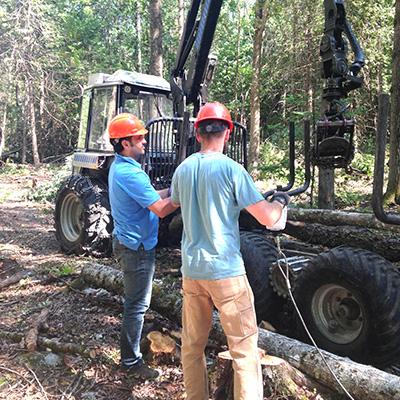Quantifying the Influence of Stand Spatial Structure and Species Composition on Forest Growth and Regeneration Patterns

NSRC researchers examined effects of forest thinning treatments on forest stand and individual-tree growth and on changes in forest structure. Researchers also assessed how distance from forwarder (machinery that carries logs) trails influences individual-tree growth. They used measurements from six spruce-fir study locations across northern Maine that were not thinned until the study was initiated ten years ago. Thinning treatments included a non-thinned control and combinations of thinning method (low, dominant, or crown) and level of relative tree density reduction (33% or 50%). Researchers mapped tree stems and measured tree diameters annually for ten post-treatment years.
Post-treatment tree mortality over the 10 years was especially high in the crown and dominant thinning treatments (36-62%). Dead trees were mostly smaller in comparison to live residual trees. Medium-aged suppressed and intermediate balsam fir and red spruce trees released in the dominant thinning treatments proved to be highly responsive to newly available growing space. This finding seems to justify harvest of the largest trees and release of lower canopy trees to promote their development in this forest ecosystem. Forwarder trails increased growth of individual trees up to a trail distance of approximately five meters from the trees.
Although high numbers of trees died in some of the thinned stands, tree growth rates in the low thinning treatments remained at relatively high levels throughout the study period. This suggests there is plenty of ongoing productivity potential in stands that were significantly less structurally modified by thinning. Commercial thinning can substantially alter within-stand dynamics and these alterations may vary with thinning method and intensity.
